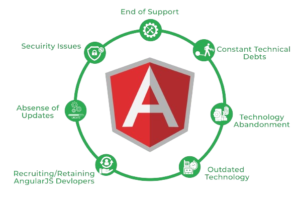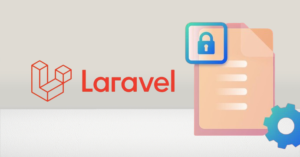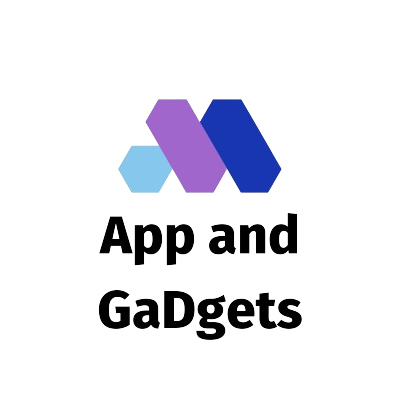Web improvement structures act as the foundation of current computerized scenes, offering engineers an organized way to deal with building powerful and dynamic sites and applications. In this high-speed computerized time, where client assumptions keep on rising, utilizing the right structure can be the distinction between progress and average quality in web advancement attempts.

Figuring out the Advantages of Web Improvement Structures
Web improvement structures offer a huge number of advantages that smooth out the advancement interaction, upgrade efficiency, and enhance asset use. How about we dive further into these benefits:
Smoothing out Advancement Cycles:
Web improvement systems furnish designers with an organized climate and predefined examples to follow, diminishing the time and exertion expected for coding. By consolidating instant modules, libraries, and formats, systems empower engineers to zero in on carrying out unambiguous functionalities as opposed to wasting time. This smoothing out of improvement processes brings about quicker project conveyance times and expanded proficiency.
Upgrading Efficiency and Proficiency:
With work in highlights like robotized testing, troubleshooting apparatuses, and code age utilities, web advancement systems fundamentally improve engineer efficiency. These instruments help distinguish and redress mistakes quickly, empowering engineers to proficiently emphasize and refine their code more. Besides, structures frequently stick to best practices and coding guidelines, cultivating code consistency and practicality across projects. Therefore, engineers can work together consistently and progress between projects effortlessly, further helping efficiency.
Cost-Adequacy and Asset Enhancement:
Using web advancement structures can prompt expense investment funds and asset enhancement for organizations. By speeding up improvement timetables and lessening the requirement for broad custom coding, structures assist with bringing down general project costs. Furthermore, the accessibility of a huge environment of modules, expansions, and local area-driven assets inside systems lessens the dependence on restrictive arrangements and costly outsider instruments.
This democratization of assets empowers organizations, everything being equal, to foster excellent web applications without burning through every last dollar. In rundown, web improvement structures offer a trifecta of benefits: they smooth out improvement processes, upgrade efficiency and proficiency, and add to cost viability and asset enhancement. Embracing these structures enables engineers to assemble complex web applications effectively while limiting the above costs and boosting profit from speculation.
Frontend and Backend Systems:
A Concise Outline In the domain of web improvement, understanding the differentiation between frontend and backend structures is pivotal for building powerful and versatile applications. How about we investigate these two viewpoints in more detail:
Qualification among Frontend and Backend Improvement:
Frontend improvement alludes to the client-side part of web improvement, where engineers center on making the UI and client experience of a site or application. This includes planning and coding components that clients collaborate with straightforwardly, like buttons, structures, and route menus.
Frontend systems give designers devices and libraries to smooth out the production of responsive and outwardly engaging UIs. Then again, backend improvement includes the server-side part of web advancement, where designers construct the rationale and usefulness that power the site or application. This incorporates undertakings like data set administration, server arrangement, and taking care of client demands.
Backend systems offer engineers the essential devices and designs to productively oversee information, handle validation, and guarantee the smooth working of web applications.
Significance of Picking Reasonable Systems for Each:
Choosing the right frontend and backend systems is basic for the outcome of a web improvement project. Frontend structures assume a critical part in molding the client experience, with highlights; for example, part-based engineering, information restricting, and stating the executives fundamentally affecting convenience and execution.
Likewise, backend systems decide the versatility, security, and practicality of web applications, making them crucial for dealing with complex business rationale and information tasks. Besides, frontend and backend structures frequently work couple, with consistent joining between the two working with the improvement of full-stack applications.
By picking viable structures for frontend and backend improvement, designers can guarantee consistency across the whole application stack, bringing about a firm and consistent client experience. All in all, frontend and backend systems serve unmistakable yet correlative jobs in web improvement, with each adding to the making of practical, easy-to-use, and versatile applications.
Grasping the distinctions and picking reasonable systems for frontend and backend improvement is fundamental for conveying great web arrangements that meet the advancing requirements of clients and organizations the same. Investigating Frontend Systems Frontend systems assume a critical part in molding the UI and experience of web applications.
How about we dive into the complexities of frontend structures and their importance in present-day web improvement:
Meaning of Frontend Advancement in Client Experience:
Frontend improvement is pivotal for making outwardly engaging, intelligent, and natural UIs that upgrade client commitment and fulfillment. A very planned front draws in clients as well as guarantees a smooth route, consistent connections, and an effective information show. Frontend structures furnish engineers with the apparatuses and assets to plan responsive designs, carry out unique substance, and upgrade execution across different gadgets and screen sizes.
Key Elements and Capacities of Frontend Structures:
Frontend structures offer plenty of elements and capacities that smooth out the improvement cycle and engage designers to make complex web interfaces. These structures ordinarily incorporate parts, layouts, and styling libraries that work with the formation of reusable UI components, like buttons, structures, and route bars.
Furthermore, frontend structures frequently consolidate highlights like information restricting, directing, and stating the executives, empowering engineers to construct dynamic and intuitive web applications easily.
Besides, frontend structures focus on execution advancement and openness, guaranteeing that web applications load rapidly and are available to clients with inabilities. Elements, for example, code parting, apathetic stacking, and server-side delivery assist with limiting page load times and upgrade the general client experience. Also, frontend structures frequently stick to web principles and best work, guaranteeing similarity across various programs and gadgets.
In rundown, frontend structures are instrumental in forming the visual appearance and intelligent way of behaving of web applications. By utilizing the elements and abilities of these systems, designers can make easy-to-use, responsive, and available points of interaction that live up to the assumptions of present-day clients. Whether building basic sites or complex web applications, frontend systems engage designers to convey convincing computerized encounters that drive commitment and fulfillment.
Inside and out Check out at Top Frontend Systems
Frontend systems structure the foundation of current web improvement, offering designers a vigorous establishment to make dynamic and responsive UIs. We should dig into the highlights and utilization of a portion of the top frontend systems overwhelming the scene in 2024:
1. Ruby on Rails: Elements and Applications
Ruby on Rails, frequently just alluded to as Rails, is a well-known open-source web application system based on the Ruby programming language. Known for its exquisite punctuation and show-over design theory, Rails enables engineers to construct unlimited web applications quickly. With working in elements like platform, Active Record ORM, and relaxing steering, Rails smoothes out the advancement cycle and advances code reuse and practicality.
 2. Django: A Thorough Outline
2. Django: A Thorough Outline
Django is a significant level Python web system eminent for its effortlessness, adaptability, and versatility. Intended to energize fast turn of events and spotless, realistic plans, Django offers designers an abundance of implicit elements for dealing with confirmation, information base administration, and URL directing. With its hearty security highlights and broad documentation, Django is an optimal decision for building versatile and secure web applications.
 3.AngularJS: Utilizing Frontend Improvement easily
3.AngularJS: Utilizing Frontend Improvement easily
AngularJS is a famous JavaScript system kept up by Google, intended for building dynamic single-page web applications. Known for its two-way information restricting and reliance infusion abilities, AngularJS empowers designers to make intuitive and responsive UIs with insignificant code. With elements like orders, channels, and administrations, AngularJS works with the improvement of particular and viable web applications.

In outline, the top frontend structures offer designers plenty of elements and capacities to smooth out the improvement cycle and make convincing client encounters. Whether building basic sites or complex web applications, these systems engage engineers to convey creative computerized arrangements that meet the developing necessities of clients and organizations the same. By utilizing the qualities of these systems, designers can assemble versatile, performant, and viable web applications that drive commitment and achievement.
Dissecting Backend Structures
Backend structures act as the foundation of web applications, giving the framework and usefulness important to deal with information the board, business rationale, and server-side tasks. How about we investigate the job and highlights of a portion of the main backend systems in 2024:
1. ASP.NET: Controlling Backend Improvement Easily
ASP.NET is a strong backend structure created by Microsoft, generally utilized for building powerful and versatile web applications and administrations. Utilizing the C# programming language and the. NET structure, ASP.NET offers engineers an extensive set-up of instruments and libraries for dealing with validation, information access, and server-side rationale. With elements like MVC design, Web Programming interface, and Substance Structure, ASP.NET empowers engineers to fabricate current, secure, and superior execution web applications.

2. Meteor: Continuous Applications made more straightforward
Meteor is an open-source stage based on Node.js, intended for building continuous web applications with JavaScript. Known for its straightforwardness and usability, Meteor offers engineers a full-stack answer for building web and portable applications utilizing a solitary codebase. With elements, for example, receptive information refreshes, hot code reloading, and worked-in confirmation, Meteor improves on the advancement of continuous applications and cultivates quick cycle and sending.
3. Laravel: Releasing the Capability of Backend Advancement
Laravel is a PHP web structure known for its rich grammar, expressive punctuation, and designer well-disposed highlights. With its measured design and inherent apparatuses for directing, verification, and data set administration, Laravel engages engineers to fabricate versatile and viable web applications effortlessly.
Moreover, Laravel’s lively environment of bundles and expansions further upgrades its abilities, permitting designers to expand and alter their applications as per their particular necessities.

In rundown, backend structures assume an urgent part in the improvement of web applications, giving designers the devices and framework important to fabricate versatile, secure, and superior execution backend frameworks.
By utilizing the qualities of driving backend systems like ASP.NET, Meteor, and Laravel, engineers can make imaginative and strong web applications that address the issues of current clients and organizations.
Conclusion:
Web improvement systems assume a critical part in molding the scene of current web advancement, offering designers an organized way to deal with building strong and dynamic web applications.
By utilizing the qualities of driving systems like Ruby on Rails, Django, ASP.NET, Meteor, and Laravel, designers can smooth out the improvement cycle, upgrade efficiency, and convey creative web arrangements that meet the advancing requirements of clients and organizations. By embracing the force of web advancement systems, designers can open additional opportunities and drive the fate of web improvement forward.
